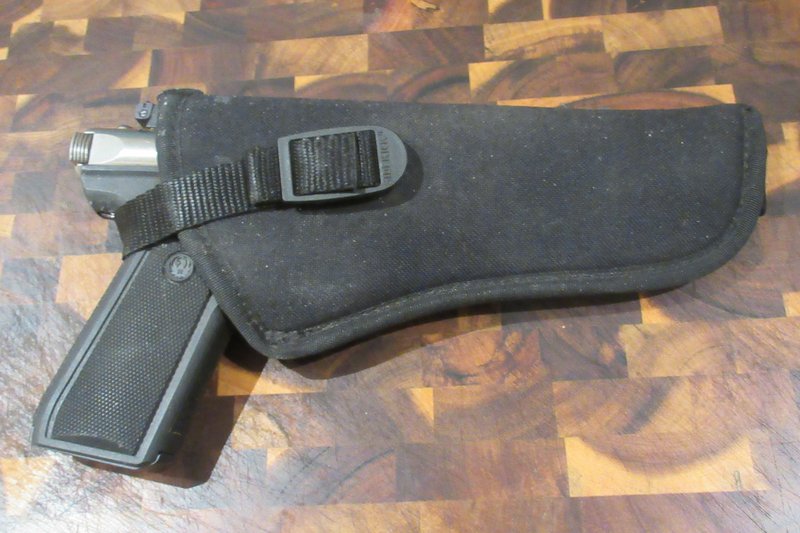

Ĭhecks from would-be purchasers soon rolled in, but as Ruger was firmly entrenched in the "old school" of financial responsibility, none were cashed until pistols actually shipped, setting a standard for "in the black" operation which would serve the company well in the future. The suggested retail price for the new pistol was a reasonable and very competitive $37.50 US. Hatcher, coupled with a subdued advertisement printed in the same magazine resulted in a great deal of interest from the public.

A favorable review published in the American Rifleman magazine penned by the notable firearms authority Major General Julian S. Financier Sturm, an amateur heraldry aficionado, made his own contribution in the form of the company's trademark "Red Eagle" coat of arms emblem, which was featured as a medallion on the left grip panel. 22 rimfire pressures, and the cost savings it produced allowed Sturm and Ruger to radically undersell the competition which still used older and more expensive manufacturing techniques. These practices worked well with a firearm which needed to handle only. Intended as a low-cost recreation and sporting product for outdoor, hunting and firearms enthusiasts, Ruger pioneered a number of simple and innovative manufacturing techniques used in the production of the new pistol, including using piano wire coiled springs in the lockwork in lieu of the flat springs most manufacturers were using at the time, and forming the receivers from two stamped sheet metal halves welded together. Ruger's new product was simply christened the "Standard" model. Realizing that prospective buyers would share his sentiment, Sturm quickly signed on board with an initial investment of $50,000 and the two teamed up to create what was to become an iconic American firearms manufacturing company, Sturm, Ruger & Co. When his affluent friend and potential financial backer Alex Sturm was shown the 1949 prototype Ruger had created, he was impressed by its sleek traditional aesthetic and its slight resemblance to the classic nostalgia-evoking German Luger P08 pistol.

Using the Nambu's silhouette and bolt system, Ruger produced his first prototype, but lacked the venture capital necessary to fund its introduction. Sometime in the years following World War II firearm designer and entrepreneur Bill Ruger acquired a pair of World War II Japanese Nambu pistols from a returning US Marine, which he successfully duplicated in his garage. Ruger's Standard Pistol 1951 Design Patent Drawing

22 caliber semi-automatic pistols ever produced. Ruger, the Standard model and its offspring went on to become the most accepted and successful. 22 caliber rimfire intended for casual sport and target shooting, and plinking. 22 Long Rifle cartridge handguns, including its later iterations: the MK II, MK III, and MK IV. The Ruger Standard Model is a rimfire semi-automatic pistol introduced in 1949 as the first product manufactured by Sturm, Ruger & Co., and was the founding member of a product line of. Open iron sights, both fixed and adjustable Blued Ruger Standard model with wood grips


 0 kommentar(er)
0 kommentar(er)
